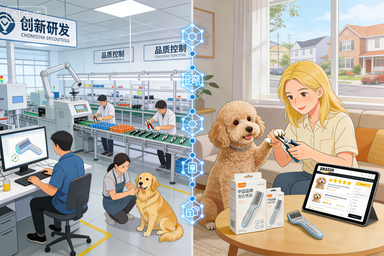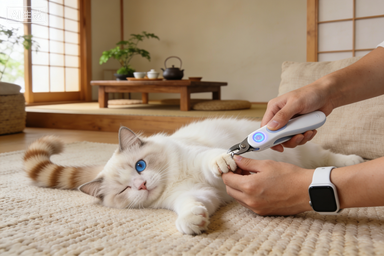"Hidden Champions" in the Nail Clipper Industry: How SMEs Break Through with Niche Advantages--Yangjiang Nail Clipper Factory Customization
I. Precise Scenario Positioning: Tapping into Demand from "General-Purpose" to "Specialized"
While leading enterprises focus on the mass market, SMEs break through by deepening their presence in specific scenarios and accurately meeting unfulfilled demands.
In response to the "silver economy" trend, they have developed elderly-friendly nail clippers integrated with a 2.5x magnifying glass and labor-saving springs. These products address the pain points of people over 60, such as poor eyesight and weak hand strength, and their annual growth rate reaches 8.2%—far exceeding the industry average.
Targeting the maternal and infant market, they have launched safety nail clippers with rounded blade edges and a skin-sensing stop function, alleviating parents’ anxiety about "scratches." The repurchase rate of these products in maternal and child care centers exceeds 45%.
Focusing on the medical scenario, they have developed medical-grade nail clippers for infection prevention. With blunt blade edges and ultraviolet disinfection design, these products fill a 120-million-yuan market gap for diabetic patients.
Thanks to scenario-based positioning, SMEs can capture over 58% market share in their respective niche segments.
II. Implementation of the C2M Model: Customization Unlocks Value-Added Space
Amid the upgrade of personalized consumption, customized nail clippers have become a core driver for SMEs to achieve value-added breakthroughs, and the C2M (Customer-to-Manufacturer) model has further significantly increased the average order value (AOV). Through flexible production lines, enterprises meet diverse customization needs:
For beauty brands, they create co-branded models by implanting brand logos into products via laser micro-engraving technology. Paired with custom gift boxes, these products serve as gifts in beauty sets, boosting AOV by 26%.
For star-rated hotels, they customize special nail clippers for toiletries kits, adopting the hotels’ VI (Visual Identity) color schemes and anti-slip handles. A factory in Yangjiang has achieved 7-day delivery for small-batch orders through this service.
For outdoor clubs, they develop titanium alloy foldable models integrated with rope-cutting functions and engraved with team logos, achieving a 40% premium over basic models.
Customization of nail clippers has evolved from simple appearance modification to functional adaptation. By 2027, this model is expected to cover 30% of the industry’s production capacity.
III. Technological Micro-Innovation: Building Competitive Barriers with Details
Instead of competing for scale, SMEs focus on precision, establishing differentiated advantages through cost-effective technological improvements:
Material upgrade: Replacing ordinary steel with antibacterial stainless steel has increased the products’ antibacterial rate to 99%, and the repurchase rate is 23% higher than that of traditional models.
Process optimization: Introducing laser welding technology to improve the blade’s 咬合 structure (occlusion structure) has solved the problem of "nail chipping," reducing product complaint rates by 22%.
Design innovation: Applying ergonomics to adjust the handle curvature has reduced user fatigue, achieving a 14.7% conversion rate from product recommendations on social media platforms.
These micro-innovations only account for 3%-5% of revenue but can increase product gross profit margin to 52%—far above the industry average.
IV. Precise Channel Penetration: Efficient Customer Reach by Avoiding Red Oceans
SMEs abandon traditional red-ocean channels such as supermarkets and instead achieve efficient customer acquisition through vertical scenario channels and cross-border channels:
Online: They focus on niche traffic pools, publishing product reviews on maternal and infant communities and elderly health forums to accurately reach target users. Live-commerce channels contribute 63% of their sales.
Offline: They bind with scenario-based channels, placing elderly-friendly models in community service centers and outdoor models in camping gear stores. Scenario-based distribution has driven an 11.2% growth rate in third- and fourth-tier markets.
Cross-border: Leveraging the policy dividends of RCEP (Regional Comprehensive Economic Partnership), they have customized moisture-proof and rust-proof models for the Southeast Asian market. In the Middle East, customization incorporating religious and cultural elements has achieved a 156% growth rate.
SMEs do not need to pursue "large-scale and all-encompassing" operations. By anchoring on scenarios, leveraging customization as wings, relying on technology as a shield, and using channels as a bridge, they can occupy a unique track in the 7.8-billion-yuan nail clipper market and become veritable "hidden champions."




